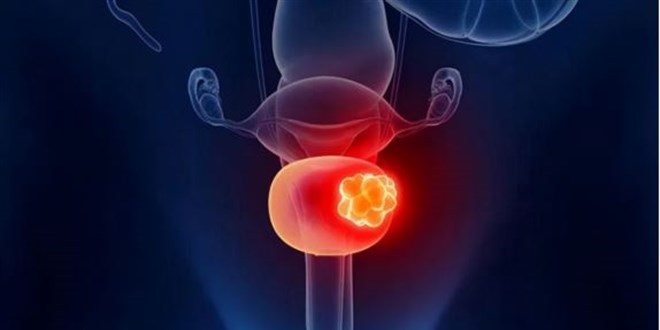
Bladder Cancer Treatment
Bladder Cancer Treatment
Bladder cancer is a disease characterized by malignant tumors occurring in the cells lining the inner surface of the urinary bladder. It commonly presents with blood in the urine (hematuria), but in some cases, it can progress without showing any symptoms. Although it is more frequently seen in men than in women, it can affect both sexes. Early diagnosis significantly increases treatment success, while modern methods such as robotic surgery offer faster recovery and a more comfortable treatment process.
Professor Gökhan Koç, a urology specialist in Izmir, uses the latest technologies in the diagnosis and treatment of bladder cancer to provide his patients with a more effective and comfortable treatment experience. This article will detail the symptoms, risk factors, diagnostic methods, and treatment options of bladder cancer.
1. Symptoms of Bladder Cancer
Bladder cancer typically manifests in the early stage with painless hematuria. The bleeding may not be continuous, which can make diagnosis difficult. In advanced stages, the following symptoms may occur:
-
Burning or pain during urination
-
Frequent urge to urinate
-
Difficulty urinating
-
Pelvic pain
-
Lower back pain (if the cancer spreads to the kidneys)
If any of these symptoms are noticed, it is crucial to consult a urology specialist for early diagnosis.
2. Risk Factors for Bladder Cancer
Multiple factors contribute to the development of bladder cancer. The main risk factors include lifestyle and genetic predisposition:
-
Smoking: One of the most common causes. Smoking leads to harmful chemicals excreted in the urine that damage bladder cells.
-
Chemical Exposure: Individuals working in paint, rubber, leather, and metal industries have a higher risk.
-
Age and Gender: Bladder cancer is usually seen in individuals over 55 years old and is more common in men.
-
Genetic Factors: Family history of bladder cancer increases risk.
-
Chronic Urinary Tract Infections: Long-term infections or bladder irritation can lead to cancer.
-
Radiotherapy and Chemotherapy: Previous pelvic radiotherapy or certain chemotherapy drugs can increase bladder cancer risk.
Avoiding risk factors and regular health check-ups are important for prevention and early diagnosis.
3. Diagnostic Methods for Bladder Cancer
Various imaging, laboratory, and biopsy methods are used for bladder cancer diagnosis. Early diagnosis greatly improves treatment success. Main diagnostic methods include:
-
Urinalysis: Detects blood and abnormal cells in the urine.
-
Urine Cytology: Examines cancer cells under a microscope in urine samples.
-
Cystoscopy: Direct visualization of the bladder interior using a thin camera (cystoscope) through the urethra; biopsy can be performed if necessary.
-
Biopsy: Pathological examination of suspicious tissue for definitive diagnosis.
-
Imaging Techniques: Ultrasound, computed tomography (CT), and magnetic resonance imaging (MRI) are used to determine tumor size, location, and spread.
These methods help determine the cancer stage and grade to plan the most appropriate treatment.
4. Stages and Grades of Bladder Cancer
The stages of bladder cancer indicate how far the cancer has invaded the bladder wall and whether it has spread to other parts of the body:
-
Stage 0 (Carcinoma in situ): Cancer cells are confined to the inner lining of the bladder without invasion into deeper tissues.
-
Stage I: Cancer has penetrated beyond the inner lining but has not reached the muscle layer.
-
Stage II: Cancer has invaded the bladder muscle layer.
-
Stage III: Cancer has spread to the fatty tissue surrounding the bladder or adjacent organs.
-
Stage IV: Cancer has metastasized to lymph nodes or distant organs.
The grade indicates how much cancer cells differ from normal cells. High-grade tumors tend to behave more aggressively.
5. Treatment Options for Bladder Cancer
Treatment depends on the cancer stage, grade, overall patient health, and age. Main treatment modalities include:
Surgical Treatment
-
Transurethral Resection (TUR-T): Removal of tumors in early stages using a minimally invasive approach through the urethra without external incisions.
-
Radical Cystectomy: Complete removal of the bladder in advanced stages. In men, the prostate may also be removed; in women, the uterus and ovaries may be excised. Robotic surgery offers fewer complications, shorter recovery times, and smaller incisions for this procedure.
Professor Gökhan Koç in Izmir offers robotic radical cystectomy providing faster recovery and a more comfortable treatment experience.
Medications
-
Immunotherapy: Strengthens the immune system to fight cancer cells. The most common is the BCG vaccine, which is administered directly into the bladder and is highly effective in early-stage bladder cancer.
-
Chemotherapy: Powerful drugs used to kill cancer cells. Systemic chemotherapy is preferred in advanced stages, while intravesical chemotherapy may be effective for early tumors.
-
Targeted Therapy: Uses drugs that specifically inhibit cancer cell growth.
Radiotherapy (Radiation Therapy)
Radiotherapy uses high-energy rays to destroy cancer cells. It can be an alternative to surgery in advanced stages or used postoperatively to eliminate residual cancer cells.
6. Advantages of Robotic Surgery in Bladder Cancer Treatment
Robotic surgery is increasingly preferred in bladder cancer treatment, especially for radical cystectomy, offering significant advantages over traditional open surgery:
-
Minimally Invasive: Smaller incisions result in less pain and faster recovery.
-
Less Bleeding: Reduced blood loss during surgery.
-
High Precision: Robotic arms have high mobility allowing surgeons to reach even the most delicate tissues.
-
Fewer Complications: Lower rates of infection and wound healing problems.
-
Shorter Hospital Stay: Patients are usually discharged sooner.
-
Faster Return to Daily Life: Recovery is quicker, enabling patients to resume work and social life earlier.
Professor Gökhan Koç provides these advantages effectively, ensuring more comfortable and successful treatment courses for his patients.
7. Post-Treatment Follow-up and Lifestyle Changes
Regular follow-up after bladder cancer treatment is critical to reduce recurrence risk. Patients should undergo periodic urine tests, cystoscopy, and imaging studies. Adopting a healthy lifestyle supports better recovery:
-
Quit smoking to reduce recurrence risk.
-
Maintain a balanced diet rich in vegetables and fruits to strengthen the immune system.
-
Engage in regular light exercise to support overall health.
-
Manage stress to promote general wellbeing.
Conclusion
Bladder cancer can be successfully controlled with early diagnosis and appropriate treatment methods. Thanks to the advantages offered by robotic surgery, patients recover faster and return to their daily lives more quickly. Professor Gökhan Koç in Izmir utilizes the most current methods in diagnosis and treatment to provide patients with effective and comfortable care.
For more information on bladder cancer symptoms, diagnostic methods, and treatment options, or to schedule an appointment, please contact us.

Social Media